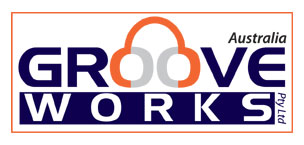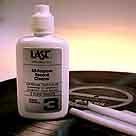Manual Record Cleaning Products
While it’s true that a Record Cleaning Machine (RCM) can make the task of cleaning records a breeze, excellent results can be achieved without one.
Just how clean your records become though, is usually directly proportional to the amount of effort put in, and the degree of meticulousness employed in the operation.
This doesn’t necessarily mean that manual record cleaning has to be a painful experience. We can make the job of hand-cleaning records easier and more efficient. The question is…how?
One of the handiest tools for cleaning sessions is an old turntable – either direct-drive (an old Lenco can often be picked up cheaply) or a belt driven deck with the belt removed. I have successfully used the latter, which naturally requires the platter to be spun by hand.
Application and spreading of fluids by applicator or brush becomes an easy process on a spinning platter, rather than working your way around a record on a bench, for example.
Once the side is clean and dry, it can be turned over to duplicate the process on the other side, but don’t forget to thoroughly clean the platter mat before you do! Some people place kitchen paper on the platter mat before cleaning the first side and then simply take it off before turning the record over – either way, it’s vital to ensure that you don’t let a cleaned record side come into contact with a dirty/dusty platter mat.
Some cleaners are applied in very small amounts on applicators, like the LAST products, where no rinsing is required, and others (like AIVS) which are applied in small pools on the record surface and then spread for brushing, require that now-contaminated fluid to be removed at the end of the step or cleaning cycle. A soft, clean, lint-free, absorbent cloth is required here. Some of the microfibre cloths available in the supermarket work well.
A point to remember is that you’ll need a dedicated cloth for each step in the cleaning process to avoid cross-contamination. The same applies to brushes – one for each step employed and marked accordingly, although you can use the one brush if you’re prepared to thoroughly rinse it in distilled water (Ultra-Pure is better) between steps. Record cleaning cloths should be washed in water only – use no soaps or detergents of any kind!
Thorough drying of the record is critical, whether at the end of the process or in between steps. In the absence of vacuum suction to remove debris and fluid, great care needs to be taken here to remove as much of the contaminated liquid as possible. Contaminants and residue left behind after cleaning will make their presence felt later when the record is played – either as surface noise, or gunk on the stylus, or both.
It’s for this reason that we recommend a final rinse in Ultra-Pure Water at the end of the cleaning process, regardless of the cleaner used. An extra step for some cleaning systems? Yes. Is it worth the effort? Yes.
Overall, the bottom line when it comes to record cleaning is concerned with attention to detail. The more meticulous the operation, the greater the sonic reward, and believe me…that reward can sometimes be astonishing.



